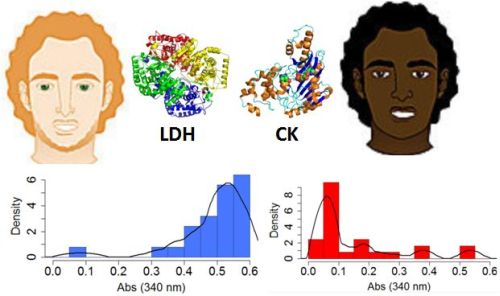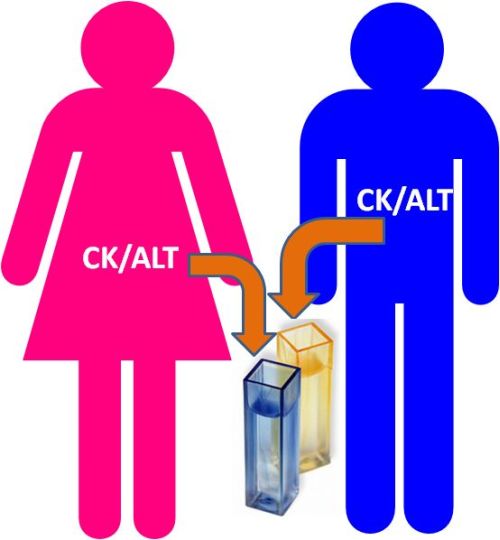 |
A new biocatalytic assay analyzing
simultaneous presence of creatine kinase (CK) and lactate dehydrogenase
(LDH) was developed aiming at the recognition of biofluids of different
ethnic origin for forensic applications. Knowing the difference in the
concentrations of CK and LDH in the blood of healthy adults of two
ethnical groups, Caucasian (CA) and African American (AA), and taking
into account the distribution pattern, we mimicked the samples of
different ethnic origin with various CK/LDH concentrations. The
analysis was performed using a multi-enzyme / multi-step biocatalytic
cascade where the differences in both included enzymes resulted in an
amplified difference in the final analytical response. The
statistically established analytical results confirmed excellent
probability to distinguish samples of different ethnic origin (CA vs.
AA). The standard enzymatic assay routinely used in hospitals for the
analysis of CK, performed for comparison, was not able to distinguish
the difference in samples mimicking blood of the different ethnic
origins. Robustness of the proposed assay was successfully tested on
dried/aged serum samples (up to 24 hrs) – in order to mimic real
forensic situation. The results obtained on the model solutions were
confirmed by the analysis of real serum samples collected from human
subjects of different ethnic origin. F. Kramer, L. Halámková, A. Poghossian, M.J. Schöning, E. Katz, J. Halámek, Biocatalytic analysis of biomarkers for forensic identification of ethnicity between Caucasian and African American groups. Analyst 2013, 138, 6251-6257. |
 |
A
new biocatalytic assay analyzing simultaneous presence of creatine
kinase (CK) and alanine transaminase (ALT) was developed aiming at the
recognition of biofluids of different gender for forensic applications.
Knowing the difference in the concentrations of CK and ALT enzymes in
the blood of healthy adults of male and female groups we mimicked the
samples of different gender with various CK/ALT concentrations. The
analysis was performed using a multi-enzyme / multi-step biocatalytic
cascade where the differences in both included enzymes resulted in an
amplified difference in the final analytical response. The analysis
performed in human serum solutions allowed discrimination of samples
corresponding to male/female groups. The robustness of the developed
analysis allowed determination of the gender for serum solutions after
their drying and ageing at least for 1 hour. Importantly for forensic
application, reaction with a chromogenic reactant nitroblue tetrazolium
allowed qualitative discrimination of the “male” and “female” samples
with a naked eye.
|
